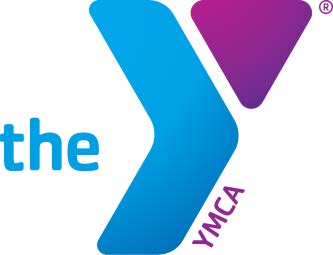The YMCA began a partnership with the LIVESTRONG program to develop a 12-week physical activity program that aims to help survivors get moving again.
BY Amber Estelle
Returning to a regular physical fitness routine after enduring treatment for cancer is a strong concern for many survivors. After discovering this through research and ongoing dialogue, The YMCA of the USA began a partnership with the LIVESTRONG program in 2007. It’s a 12-week physical activity program that aims to help survivors get moving again.
For Ed Hamilton, the Henry County YMCA LIVESTRONG program did exactly that. Ed’s fitness journey took a detour in 2002 when a stroke caused the right side of his body to become paralyzed. Previously, Ed had considered himself to befit and active. The effects of the stroke made it harder for him to work out in public gyms. “I didn’t want to be out in a big group, especially around people that are working out. I didn’t want to look like an invalid. So, I quit working out,” he expressed. Two years later, he was diagnosed with bladder cancer. After two successful operations, he was cancer-free.
In January of this year, Ed saw an article in the Courier Times about the Henry County Y starting to participate in the LIVESTRONG Program and thought it would be a good way to jump back into exercising. “To have a physical therapist, an exercise coach, and a membership for six months was good. The people that are running it were great. It was beneficial to be with people who were going through or had gone through the same thing I went through. It got me back into exercising, and I’m planning to keep my membership going,” shared Ed.
Fellow survivor Stephanie Lantz appreciated how versatile and tailor-made the program was. She explained, “They met us at our own level to help start with what we were capable of at the beginning and build from there to increase repetitions and how far we could go. We weren’t made to do any one activity. During the course of the 12 weeks, we worked out on equipment, our own resistance bands, weights, arm and leg lifts, boxing, yoga, and some swimming. It wasn’t something pre-set. They were encouraging and empathetic to our struggles.”
When Stephanie was first encouraged to attend a meeting about LIVESTRONG in February, she was still in the healing process from breast cancer treatment. Initially, she was unsure about working out in a group setting at a large gym. But through one-to-one instruction and over time, she felt more confident. She expressed, “It was like being at a class at school. The program helped me overcome feeling conspicuous about using exercise equipment and being around people who were already fit. It helped me overcome obstacles.”
Along with Stephanie, Suzette Brown, also appreciated how the program is adaptable to each individual. She stated, “It’s been great because they meet you where you are. The team is really open to what you can do and not what you can’t do. So many times, we get restrictions as cancer patients. But there’s accountability and support for survivors.”
After six and a half months of chemotherapy, 37 rounds of radiation, and 13 surgeries, Suzette found herself in remission and trying to get back her strength and endurance. She received treatment in Indianapolis, made many connections, and knew of the LIVESTRONG program there. It was too difficult to make the commute several times each week to participate. So, Suzette went straight to the source. She shared, “I called LIVESTRONG and said that we needed it locally. I was so excited to find out that New Castle was getting it. Then, there were no excuses to keep me from getting plugged into it.”
Through experiencing the impact of the Y’s Diabetes Prevention Program, Director of Member Relations, Kelsay Smith felt inspired to bring the LIVESTRONG program here as well. She shared, “My heart is really into serving the community’s needs. Seeing the impact of evidence-based health initiatives and hearing community members ask about the LIVESTRONG program helped us bring it here.”
Though the first class of the program was small, it has given Kelsay a new perspective on what cancer survivors need. “We wanted to give them a place with a sense of normalcy. They can all relate on some level. They’ve all heard a diagnosis and had to cope with a prognosis. While this is a supportive group, it is not a support group. Participants can share as much or as little as they want. But it’s more about getting back to daily activities. What we’re therefore is to support their moving forward and empower them with the tools to build and rebuild strength and confidence,” she said.
“It’s a gift,” expressed Suzette. “It’s an experience that can be opened at any place in someone’s cancer journey. If you finished treatment 10 years ago or just finished it or are still in it, you can start at any time. I would encourage anyone to take advantage of it. There’s no cost involved. Just a commitment to be there and be willing to try new things.”
